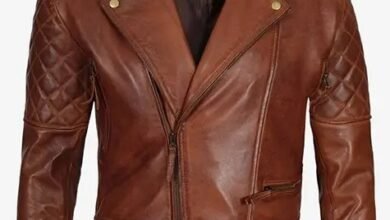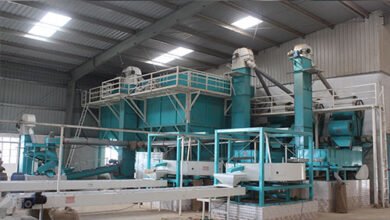
We’re always on the lookout for a pair of shoes that are both comfortable and stylish. A comfortable style that does not sacrifice style. When learning how to make shoes, knowing how to specify footwear materials is crucial. You must be able to spec footwear materials if you want to learn how to become a shoe designer.
To create your footwear masterpiece, you have an infinite number of material and color options. Choose from rich leathers, silky mesh, or high-tech synthetics. The material will determine whether the design succeeds or fails. It can give you the sensation of walking on air or provide the support you need to stay on your feet all day.
It’ll serve as your go-to resource for determining the best material to match your aesthetic without causing undue discomfort. It’s easy to overlook shoe materials, but they’re the foundation of your footwear. The shoe designer must choose materials that can withstand the demands of shoemaking with great care.
Best generation materials for branded shoes
There are a plethora of best materials for shoe designers. To complete the design of the shoe, each brand and designer will choose their own material. The shoe’s material is what separates it from the page and gives it life.
The shoe design brief should help you make decisions about footwear materials for your projects. The design concept establishes the type of shoe you’ll be producing. You can choose the right materials for your shoe design using your design brief and some background knowledge.
Every material serves a specific purpose and contributes to the shoe’s distinctive properties. Each material will have its own place in your shoe, depending on its design. One of the most important aspects of shoe design is material selection. Below are some of the most common materials.
-
Leather
The most common material for making shoes is cow leather. It’s long-lasting, flexible, and stretchable, and it comes in a variety of styles, colors, and prices. It is a fantastic material to work with, and you can make beautiful functional and stylish shoes out of it.
Leather shoes have the advantage of being breathable and molding to your feet over time for a comfortable fit. While they may require some break-in time, these leather shoes will quickly become your go-to. Like no other shoe, a fine leather shoe breathes and conforms.
Vegan leather is becoming a popular alternative to traditional leather for shoes. If you want the look and feel of traditional leather but don’t want to use an animal product, the vegan option is for you. Leather shoes, like leather handbags, can develop their own personality. Traditional leather is typically expensive, whereas man-made vegan leather is frequently less so.
-
Canvas
Canvas is distinct in that it is a hemp-based shoe material. This material is simple and elegant, and it has found a place in the casual footwear industry. Canvas material is commonly available in sneakers and summer shoes. For extra wearability and durability, most shoes with a canvas upper have a rubber sole.
Canvas shoes are easy to care for and require little maintenance. This makes them ideal for anyone looking for a pair of comfortable shoes to wear every day. Canvas shoes have the advantage of becoming machine washable, making them ideal for all-day wear. Canvas, for example, does not retain its original shape and eventually wears down and becomes flat.
-
Textile materials
Colors, weaves, knits, fibers, and deniers are all available in textiles for shoes. Cotton, wool, nylon, polyester, polypropylene, rayon, lycra, and a variety of other fibers are used in footwear textiles. Each has its own physical characteristics and appearance.
Textiles are a wonder material when it comes to shoes. These materials have a special place in footwear design due to their infinite variety of weaves, colors, patterns, and special features. Textiles can be found on the inside and outside of footwear, as well as on the bottoms.
Nylon and polyester are examples of man-made polymer fibers that are both lightweight and durable. Textiles have a higher duty rate than other goods, depending on your country’s import rules. Shoes with 52% textile surface area are occasionally 20%.
-
Nylon
Nylon is a man-made textile that is popular among designers looking to add a splash of color or pattern to their work. It can be found in the shoe’s interior or exterior design to give it a unique look. Nylon is a popular material for summer shoes because it is lightweight and durable.
-
Lycra
Another popular man-made textile that you’ll see in activewear and athletic shoes is lycra. It’s frequently used to add extra stretch to shoes or to make them more comfortable. Lycra is a material that should be at the top of your list if you’re looking for shoes that can endure all-day wear.
-
Foams
Foam is another material for making the upper of shoes, there are two types of foam: open-cell foam and closed-cell foam. The plastic compound that makes up the foam cells is the open cell, which is exactly what it sounds like. similar to a dishwashing sponge, allowing air and water to freely enter and exit the foam. Closed-cell foam, on the other hand, is the polar opposite; individual cells are closed or sealed, preventing the foam’s internal gas from escaping.
Open-cell foam is softer than closed-cell foam and is made of polyurethane plastic. Open-cell foam is available in a variety of densities, thicknesses, and colors. The PU foam allows the stitches to sink in and provides extra support while also reducing wrinkles in the mesh.
Closed-cell foam, on the other hand, is typically denser. Closed-cell foam is used in the midsoles of all shoes. EVA (ethyl vinyl acetate), PE (polyethylene), PU (polyurethane), and Neoprene are all examples of closed-cell foams, each with its own set of properties. Knowing what foam is appropriate for the shoe upper and what foam is appropriate for cushioning the shoe outsole is critical when working with foam.
Conclusion
In short, the main theme of this topic is to classify the top footwear materials for branded shoes in the upcoming generation. When it comes to shoes, there is no such thing as the best material. What works well in a running shoe may not work well in a work boot. Material selection is a collaborative effort between the shoe designer, footwear developer, and product owner. Prices, performance, durability, duty rates, comfort, and styling are all factors to consider. Each shoe will have its own set of material requirements. In big companies, the selection of the material in the Nike branded shoes, Adidas branded shoes, air max branded shoes and others are highly crucial for making reliable and comfortable shoes for the people.
Readmore: 10 reasons why you should consider hiring a Fee-based Financial Planner.




